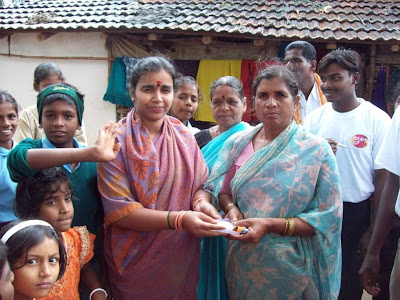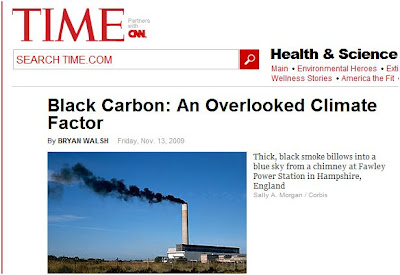 If India were to put out 150 million improved biomass stoves each year for a decade, by 2020, the total number of averted premature deaths from acute lower respiratory infections will have reached about 240 000 children aged younger than 5 years, and more than 1·8 million premature adult deaths from ischaemic heart disease and chronic obstructive pulmonary disease (COPD) will have been averted, so says a Lancet paper, one of a series of six.
If India were to put out 150 million improved biomass stoves each year for a decade, by 2020, the total number of averted premature deaths from acute lower respiratory infections will have reached about 240 000 children aged younger than 5 years, and more than 1·8 million premature adult deaths from ischaemic heart disease and chronic obstructive pulmonary disease (COPD) will have been averted, so says a Lancet paper, one of a series of six.The paper is a part of a Health and Climate Change series titled "Public health benefits of strategies to reduce greenhouse-gas emissions: household energy" and is co-authored by Paul Wilkinson, Kirk R Smith, Michael Davies, Heather Adair, Ben G Armstrong, Mark Barrett, Nigel Bruce, Andy Haines, Ian Hamilton, Tadj Oreszczyn, Ian Ridley, Cathryn Tonne and Zaid Chalabi.
The paper states: "For India, we specified a 10-year programme to introduce 150 million low-emissions household cook-stoves. This scenario was chosen because of the major public health burden that is associated with indoor air pollution from inefficient burning of biomass fuels in India and in many other low-income countries. It is also consistent with proposals that are being considered in India. The cost would be less than $50 every 5 years, perhaps paid partly through government subsidy and partly by the households because of fuel cost savings and time savings in harvesting of fuel.
The scenario used here draws lessons from the previous Indian national stove programme, the National Programme for Improved Chullhas,13 which, like the major national programme in China,14 was initiated in the early 1980s and focused mainly on increasing fuel efficiency to assist with rural welfare and, to a lesser extent, protect forests. Secondary emphasis was on reduction of smoke exposure through use of chimneys, and there was no consideration of outdoor pollution or climate. However, there have been major changes in our understanding about the value of and technology for emissions reductions and in world conditions that have modified the landscape for improved biomass stove programmes."
"The changes in health related to traditional fuel use patterns are much better established than they were previously, with hundreds of reports documenting the associated health outcomes. An estimated 400 000 pre-mature deaths per year in India are caused by biomass-fuel use in households.9 The international price of liquified petroleum gas, which is the major alternative clean household fuel, will probably continue to increase faster than will rural incomes, making the transition to modern fuels difficult and, if subsidised by government,increasingly expensive for national budgets. This situation adds to the attraction of deployment of advanced biomass stoves that provide high performance, use local renewable resources, and relieve the government of the cost of fuel subsidies. Climate change is a major threat and household fuel combustion is an important contributor, especially to black carbon, with high greenhouse effects per unit energy delivered compared with many other human uses of energy, depending on the relative weighting of the climate-active pollutants emitted."
The paper argues that if 15 million stoves are given out each year, at the end of the decade, 87% of Indian households would have clean combustion, either through graduating on their own to clean fuels or receiving advanced biomass stoves as part of the intervention.
By 2020, the total number of averted premature deaths from acute lower respiratory infections will have reached about 240 000 children aged younger than 5 years, and more than 1·8 million premature adult deaths from ischaemic heart disease and chronic obstructive pulmonary disease (COPD) will have been averted.
The paper claims that overall, the national burden of disease in 2020 from these three major diseases would be about a sixth lower than it would have been without the stove programme—which is equivalent to elimination of nearly half the entire cancer burden in India in 2020.















